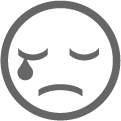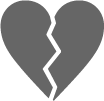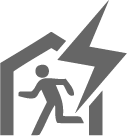
(1) Identification
- Consultation from parents or relatives
- Consultation or report from a school or a medical facility
- Consultation or report from a neighbor
- Protection by police
日本語 / ENGLISH
The Japanese “social care” (社会的養護) is the system in which local governments provide protective care to children without parents or children whose parents are unable to raise the child.
This page gives the outline of social care in Japan.

Child Abuse
Child abuse consists of physical, psychological and sexual abuse as well as child neglect. Behind such abusive behavior, many kinds of socioeconomic factors might lay such as the parent’s health condition, economic insecurity and isolation.

Health Problems
In addition to the “physical” diseases, psychiatric diseases of a parent is also an important issue. Mental problems such as depression, schizophrenia and alcohol addiction have the potential to leave the parent unemployed or prevent the parent from taking appropriate care of the child.

Financial Problems
The employment status of the parent could affect the parent’s child rearing capability. Related to this issue, the rise of the relative poverty rate among households with children is drawing attention in Japan in recent years (referred to as 子どもの貧困).

Divorce & Domestic Violence
After divorce, the single mother/father (ひとり親) has to take all the burden of the household, from securing a decent income to taking care of the child.
Domestic violence (DV) in front of the eyes of the child corresponds to psychological child abuse.

Incidents & Accidents
Being involved in an unexpected event like a traffic accident, a fire or even a criminal incident could take away the parent’s child rearing capability. Getting paid an insurance money does not replace the loss in human resources.

Natural Disaster
Natural disasters can leave the child an orphan, and relatives might be unable to take care of him/her instead. Even if there was no casualty, the economic loss could pressure the parent’s child rearing ability.
Authorities in the local governments in Japan have the responsibility to provide protective care to the children whose parents do not have or are likely to lose their child care capability. Part of the welfare system aimed to achieve this is called social care (社会的養護). Social care plays the roles listed below, under the principles “for the best interest of children” and “foster children in the hand of the entire society”.
Fostering
Social care raises children who couldn’t be appropriately raised in their original households. It is believed that family-like environment is desirable in alternative care facilities. But in the cases of children that have difficult conditions such as a trauma from an abusive treatment, the balance between professional care and such family-like environment needs to be thought out.
Inappropriate rearing such as child abuse causes psychological wounds or disruptions in mental development. In social care, these problems are met with therapeutic interventions by psychiatrists and clinical psychologists in order to recover proper development.
Local Community Support
Social care is putting more effort into the support of the local parents and local communities, in the hope of reducing child abuse or detecting child abuse earlier. Social care is also responsible for providing aftercare to the people who left social care facilities, which makes it even more important to build a closer relationship with local communities.
* Child guidance centers (児童相談所) are set up in each prefectures and government ordinance cities in Japan.

(1) Identification

(2) Temporary Custody
The child guidance center ascertains the status of the child, and takes him/her to its temporary custody facility if necessary. It examines the child’s circumstances, and evaluate the possibility of turning the child back home to provide home assistance. If it determines that the child should not be turned back to his/her parents, it will decide a measure of alternative care such as transferring to a children’s home.

(3) Admission
The child starts living in a children’s home or a household of foster parents. Facility to which a child is placed will be based on availability. Sometimes children are placed in an unfamiliar location.
< Alternative Care >
Alternative care is the set of measures in which a child is separated from his/her parent(s) and raised in facilities or foster parents. The necessity of such separation is being judged by a child guidance center, and a consent of the parent(s) is not required when the court approves the child guidance center’s decision. Depending on the child’s circumstances, this separation could end in months or last until the age limit of social care (18 years old).
< Other Supportive Systems >
When there is no need to separate a child from his/her parents, social care institutions listed below provide home assistance, day care or temporary accommodation to support the child and the parents. Child guidance centers have the authority to determine what measures to be taken in which type of facility (excluding maternal and child living support facility and short-stay service).
Source(1): 厚生労働省(Ministry of Health, Labor and Welfare)子ども家庭局家庭福祉課 “社会的養育の推進に向けて” September 2017 ( Link )
* The number of children are based on MHLW’s “福祉行政報告例”, as of March 31st 2016.
* Facility To Support The Development Of Children’s Self-sustaining Capacity (児童自立支援施設) includes two national facilities.
Source(2): 厚生労働省(Ministry of Health, Labor and Welfare) 新たな社会的養育の在り方に関する検討会 “新しい社会的養育ビジョン” August 2017 ( Link )
Number of Child Abuse Reported
To Child Guidance Centers
Source: 厚生労働省(Ministry of Health, Labor and Welfare)子ども家庭局家庭福祉課 “社会的養育の推進に向けて” December 2017 ( Link )
* Based on MHLW’s “福祉行政報告例”.
* Fukushima Prefecture’ data was excluded from the FY 2010 survey.
Number of Child Who
Experienced Abuse in the Past
Source: 厚生労働省(Ministry of Health, Labor and Welfare) “児童養護施設入所児童等調査” February 1st 2013 ( Link )
Definition Of Child Abuse
Any of the act listed below, when done to a juvenile under the age of 18 by his/her guardian, corresponds to child abuse (児童虐待) in the Japanese law.
Physical Abuse | Hit, kick, slap, throw down, shake intensively, sear, drown, strangle by the neck, constrain to a room with ropes and the like |
|---|---|
Psychological Abuse | Verbal intimidation, ignoring, discriminatory treatment among siblings, violence to a family member or a sibling in front of the eyes of the child (domestic violence) and the like |
Sexual Abuse | Sexual behavior towards the child, making the child witness sexual behaviors, touch the child's sexual organs, make the child touch other's sexual organs, take pornography and the like |
Neglect | Lock up inside, starving, keep the child in an extraordinarily insanitary condition, leave inside a car, not taking the child to a medical institution when in serious condition and the like |
Source: 厚生労働省(Ministry of Health, Labor and Welfare) “児童虐待の定義と現状” ( Link )
* In Japan, the article 2 of the Act on the Prevention, etc. of Child Abuse stipulates the definition of child abuse.
* The term “guardian” mentioned here includes a person in parental authority, a guardian of minor, a foster parent and a head of children’s home.
When You Spotted A Possible Child Abuse Case…
About The Orange Ribbon Movement

The Orange Ribbon Movement (オレンジリボン運動) is a Japanese citizen’s campaign calling to eliminate child abuse, by using the Orange Ribbon Mark (TM) as an symbol of child abuse prevention.
NPO Lights On Children is also an supporter of the Orange Ribbon Movement To Prevent Child Abuse.
Source: 認定特定非営利活動法人 児童虐待防止全国ネットワーク(NPO Japan Network for Prevention of Child Abuse and Neglect) “オレンジリボンについて” ( Link )
* The Orange Ribbon Mark is a trademark of NPO Japan Network for Prevention of Child Abuse and Neglect (認定特定非営利活動法人 児童虐待防止全国ネットワーク).
(The content of this page was revised on May 6 2018)
Copyright 2014-2024 NPO Lights On Children